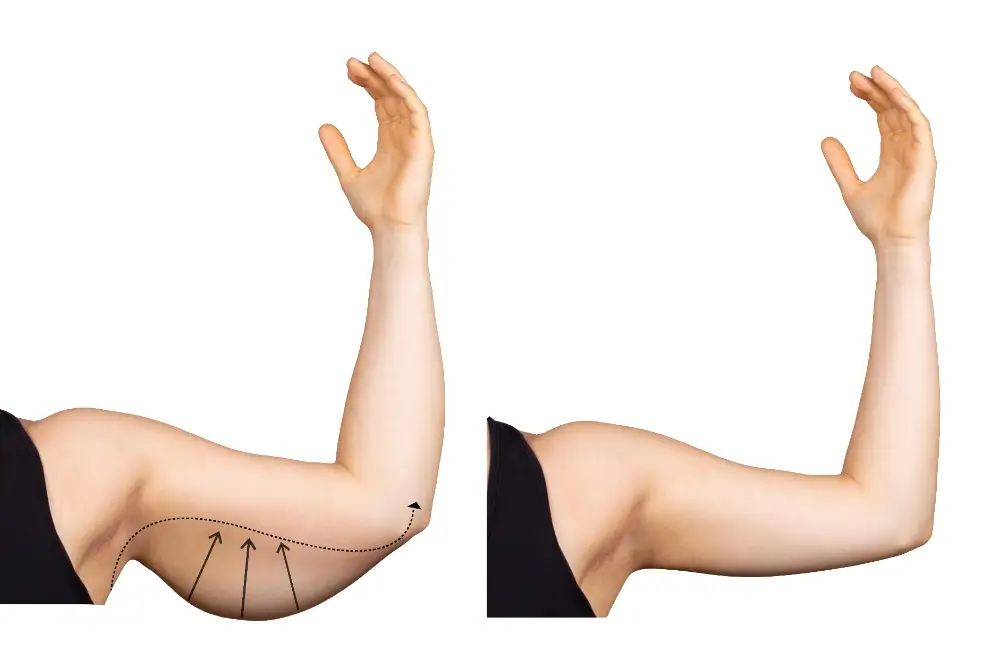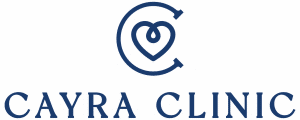Arm liposuction is a popular procedure for removing stubborn fat deposits. It can dramatically improve the contour and appearance of your arms.
But what happens after the procedure?
Understanding the recovery process is crucial for achieving the best results. This guide will provide you with comprehensive insights into arm liposuction recovery.
We’ll discuss what to do and what not to do during this critical period. From immediate post-operative care to long-term maintenance, we’ve got you covered.
So, whether you’re considering arm liposuction or have already undergone the procedure, this guide is for you. Let’s embark on this journey towards a successful recovery together.
Understanding Arm Liposuction and Recovery
Arm liposuction targets localized fat deposits to enhance arm contour. It’s not a weight loss solution but a cosmetic procedure for specific fat removal. Knowing what the procedure entails helps set realistic expectations.

Recovery varies by individual and depends on several factors. Typically, you’ll experience some swelling and bruising, which is normal. Understanding the healing process prepares you for what lies ahead. This awareness is key to achieving a smooth recovery and the best possible results. It’s a journey that requires patience and care for your new arm shape to emerge fully.
The First 48 Hours Post-Procedure
The initial 48 hours following arm liposuction are crucial. During this period, your body begins the healing process, so it’s essential to follow your surgeon’s instructions closely.
Expect some discomfort and swelling during the first two days. This is entirely normal and part of the healing process. Keeping track of any changes can help you feel more in control.
Here’s what to focus on in the first two days:
- Rest as much as possible and avoid strenuous activities.
- Keep your arms elevated to reduce swelling.
- Take prescribed medications to manage pain effectively.
Staying alert to your body’s signals in these early hours can ease the overall recovery. Being proactive ensures you support your body’s natural healing capabilities, setting the stage for a smoother recovery phase.
Compression Garments: A Necessity, Not an Option
Compression garments play a vital role in arm liposuction recovery. They help reduce swelling and support your arms during the healing phase. Wearing them consistently can make a significant difference in your recovery process.
These garments are not merely for comfort; they aid in shaping the contour of your arms. Applying gentle pressure helps your skin adhere smoothly to the underlying tissue, helping you achieve optimal results and minimize potential complications.
It’s crucial to wear them as directed by your surgeon. Typically, you’ll need to wear them for several weeks post-procedure. Ensure the garment fits well and isn’t too tight, which could impede blood circulation. Proper fit and consistent use are key to leveraging the benefits of compression garments in your recovery journey.
Pain Management and Medication
Managing pain after arm liposuction is essential for a smoother recovery. Your surgeon will likely prescribe pain medications to help alleviate any discomfort. Follow their instructions carefully to ensure adequate pain relief.
Taking medication as prescribed is essential, and the recommended dosage should not be exceeded. Contact your healthcare provider promptly if you experience unusual side effects or persistent pain. By staying on top of your pain management, you can focus more on healing and less on discomfort.
Rest and Recovery: Balancing Activity and Relaxation
Rest is critical in the initial days following arm liposuction. Your body needs time to heal, so avoid strenuous activities. Prioritize sleep and give your body the rest it deserves.
Knowing when and how much activity to incorporate into your routine is also essential. Gentle, non-strenuous movements are encouraged to promote circulation and reduce the risk of blood clots. However, avoid lifting heavy objects or performing intense exercises too soon.
To strike the right balance, consider these tips:
- Listen to your body and rest when needed.
- Start with light movements, such as short walks.
- Gradually increase activity based on your comfort level and surgeon’s advice.
Balancing rest with light activities helps speed up recovery while avoiding setbacks.
Swelling and Bruising: Tips for Reduction
Swelling and bruising are common after arm liposuction. They are part of the healing process. However, there are ways to manage and reduce them effectively.
Consider these strategies to help minimize discomfort and promote healing:
- Elevate your arms whenever possible.
- Use ice packs to reduce swelling and soothe bruises.
- Wear compression garments as your surgeon has advised.
These practices not only ease discomfort but also support faster recovery. Always follow your healthcare provider’s instructions for the best results.
Nutrition and Hydration: Fueling Your Healing
Proper nutrition and hydration play a vital role in recovery. A balanced diet fuels your body’s healing process. Aim to include foods rich in vitamins and minerals.
Staying well-hydrated reduces swelling and flushes out toxins. Drink plenty of water throughout the day. This simple habit effectively supports your body’s natural healing mechanisms.
Exercise and Mobility: Guidelines for Safe Movement
After arm liposuction, maintaining the right balance between rest and activity is crucial. Initially, focus on gentle movements. Avoid strenuous activities that can strain your arms.

As you progress, incorporate light stretching to promote circulation and healing. This can help reduce stiffness and improve mobility. Always listen to your body and avoid pushing too hard.
Here are some safe movement guidelines:
- Start with short, gentle walks to boost circulation.
- Gradually increase activity as your recovery advances.
- Avoid lifting heavy objects until cleared by your surgeon.
Following these tips can aid a smoother recovery, ensuring mobility without compromising your healing process.
Incision Care and Monitoring for Complications
Caring for your incision sites is critical to preventing infection. Keep the areas clean and dry, and follow your surgeon’s instructions on cleaning and dressing changes.
Be vigilant for signs of complications, like increased redness, swelling, or discharge. These may indicate infection or other issues. Contact your surgeon if you notice anything unusual.
Proper incision care speeds up recovery and minimizes scarring. Ensuring good hygiene around the treated area is essential for optimal healing.
Long-Term Care and Maintaining Results
Maintaining your arm liposuction results requires a commitment to a healthy lifestyle. Eat a balanced diet, exercise regularly, and avoid significant weight fluctuations to preserve the procedure’s outcomes.
Wear supportive garments if recommended by your surgeon. Monitor your arm’s condition regularly and seek advice if you notice changes. A consistent care routine ensures that your new arm contour remains intact. Proper long-term care will help you enjoy lasting results.

Psychological Aspects of Recovery
Recovery is not just physical; it affects your mental well-being too. Embrace the journey with patience. Set realistic expectations for yourself and your new appearance.
Expect emotional ups and downs during recovery. A supportive environment and positive mindset can ease this phase. Remember, healing takes time, both inside and out.
Conclusion: Embracing the New You
Arm liposuction recovery is a journey toward achieving your desired results. This process requires time and patience. Following post-op care guidelines ensures optimal healing.
Celebrate your progress and embrace your transformed appearance. With a commitment to healthy habits, you can enjoy long-lasting satisfaction and renewed self-confidence. Your journey to a new you is just beginning.
Recovering from arm liposuction involves a specific aftercare routine to ensure optimal healing and results. Our blog provides detailed information on what to expect during recovery, including tips for managing swelling, wearing compression garments, and resuming normal activities. At Cayra Clinic, we prioritize patient education and support. Our team is dedicated to guiding you through every step of your journey, from pre-operative preparation to post-operative care. Visit our About Us page and Contact us today to learn more about arm liposuction and how we can help you achieve your desired results.
FAQ
how long to wear compression garment after arm liposuction?
Generally, you’ll need to wear a compression garment after arm liposuction for about 4 to 6 weeks.
Here’s a more detailed breakdown:
- First 2-4 weeks: Most surgeons recommend wearing the garment 24/7, except for showering or washing the garment.
- In the following weeks, you might transition to wearing it only during the day or for fewer hours, as advised by your surgeon.
Why is it important?
Compression garments help:
- Reduce swelling
- Minimize bruising
- Support the tissues as they heal
- Promote better blood circulation
- Improve the final results of the liposuction
Your surgeon will provide specific instructions on how long to wear the garment based on your case and the extent of your procedure. It’s crucial to follow their recommendations carefully for optimal healing and results.
how long is recovery after arm liposuction?
Recovery time after arm liposuction varies, but here’s a general timeline:
- First few days: Expect soreness, swelling, and bruising. You’ll need to rest and wear a compression garment.
- 1-2 weeks: Most discomfort subsides. You can gradually return to light activities and desk work.
- 4-6 weeks: You can usually resume most normal activities, including exercise.
- Several months: It may take several months for residual swelling to completely disappear and for the final results to become fully visible.
Factors affecting recovery:
- Extent of liposuction
- Individual healing
- Adherence to post-op instructions
Your surgeon will provide personalized guidance on your recovery timeline.
how to do massage under arms after liposuction?
It’s great you’re thinking about post-op care! Massaging the underarms after arm liposuction can help with lymphatic drainage, reducing swelling, and improving healing.1 However, it’s crucial to do it gently and correctly. Here’s a basic guide:
1. Timing:
- Start: Usually a few days after surgery, once your surgeon gives the okay.
- Frequency: 2-3 times per day for 5-10 minutes.
2. Technique:
- Light pressure: Use gentle, circular motions with your fingertips.
- Direction: Stroke upwards towards the armpit to encourage lymph flow.
- Avoid incisions: Be careful around any incision sites.
- Use lotion: A gentle, unscented lotion can help your fingers glide smoothly.
3. Important notes:
- Listen to your body: If it hurts, stop and rest.
- Follow your surgeon’s instructions: They may have specific advice for your case.
- Consider professional help: A certified lymphatic drainage massage therapist can provide more targeted treatment.2
Here’s a simple visualization:
Imagine gently guiding fluid upwards from your elbow towards your armpit, like you’re helping it flow along a gentle stream.
Remember: Always consult your surgeon before starting any post-op massage. They can provide personalized guidance and ensure you’re healing properly.
how to sleep after arm liposuction?
Sleeping after arm liposuction requires a bit of adjustment to minimize swelling and discomfort. Here are some tips:
- Elevate your arms: Use pillows to raise your arms above your heart level. This helps reduce swelling and promotes fluid drainage.
- Sleep on your back: This is generally the best position as it avoids putting pressure on your arms.
- Avoid side sleeping: Avoid sleeping on your sides, especially in the first few weeks, as this can put pressure on the incisions and cause discomfort.
- Wear your compression garment: Your surgeon will likely advise you to wear your compression garment even while sleeping to help with swelling and support.
- Adjust your bedding: Consider using extra pillows or a wedge pillow to create a more comfortable and supportive sleeping position.
Important notes:
- Listen to your body: If you find a position uncomfortable, adjust it.
- Follow your surgeon’s instructions: They may have specific recommendations for your case.
- Be patient: Finding a comfortable sleeping position might take some time, but it will get easier as you heal.
Following these tips can ensure a more comfortable and restful sleep while promoting optimal healing after your arm liposuction procedure.
how to wrap arms after liposuction?
You won’t be wrapping your arms yourself after liposuction. Your surgeon will apply the operating room’s initial dressings and compression garmentm. This is important for proper healing and to minimize complications.
Here’s what typically happens:
- Incision Care: Small incisions made during the procedure are closed with sutures or surgical glue.
- Absorbent Pads: Sterile absorbent pads are placed over the incisions to absorb drainage.
- Compression Garment: A specialized compression garment is carefully fitted and applied to your arms. This garment supports, reduces swelling, and helps the skin retract smoothly.
Important Notes:
- Don’t attempt to re-wrap or adjust the dressings yourself. This could disrupt the healing process or cause complications.
- Follow your surgeon’s instructions carefully regarding when and how to change dressings or care for the incisions.
- Attend all follow-up appointments so your surgeon can monitor your healing and adjust the compression garment as needed.
Contact your surgeon immediately if you have any concerns or notice any issues with the dressings or garment. They are there to guide you through the recovery process and ensure the best possible results.
what to expect after arm liposuction?
After arm liposuction, expect soreness, swelling, and bruising. You’ll wear a compression garment and gradually return to activities. Small scars will fade, revealing a more toned appearance. Follow your surgeon’s instructions and attend follow-up appointments for a smooth recovery.
why are my arms hard after liposuction?
It’s normal for your arms to feel stiff after liposuction due to swelling, fluid, scar tissue, and the compression garment. This usually improves as you heal. Contact your surgeon, follow post-op instructions, and consider lymphatic massage if you’re concerned.
is arm liposuction safe?
Arm liposuction is generally safe when done by a qualified surgeon. However, like any surgery, it has potential risks, including swelling, bruising, infection, and fluid buildup. Choosing a skilled surgeon and following instructions carefully can minimize these risks. It’s important to discuss any concerns with your surgeon before the procedure.
